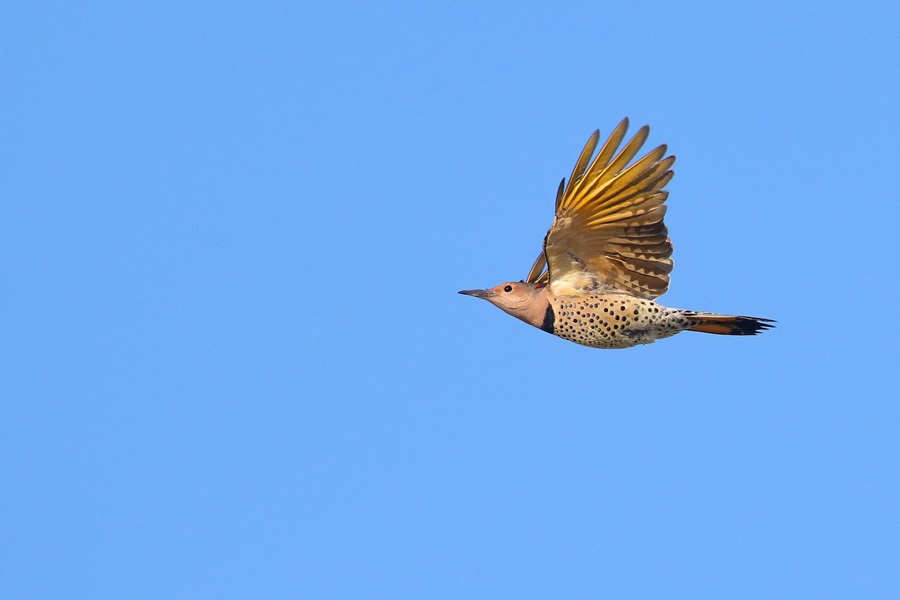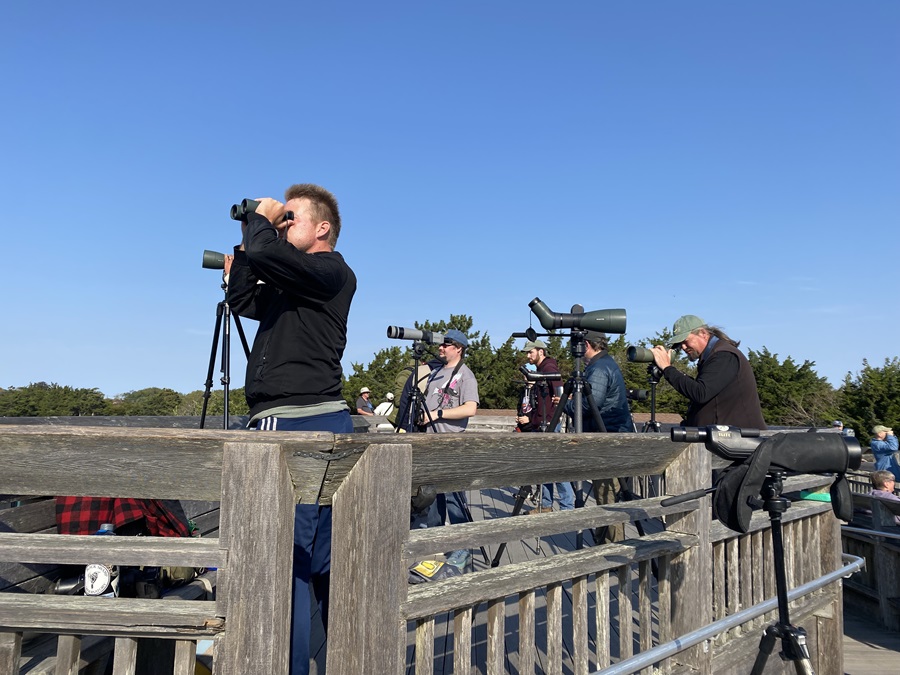By late October, migration is winding down on Cape Cod. Many of our summer visitors are gone, our warblers are filing out to be replaced by sparrows, and our winter waterfowl are returning from the Arctic. But just shy of 500 miles south of here, Cape May, N.J. is still enjoying peak migration. I had to see it.
In the fall, as migrating landbirds travel south from their breeding grounds, they funnel down New Jersey, getting more and more concentrated until they reach Cape May Point and gather on the shores of Delaware Bay. Hawks, eagles, and falcons travel overhead diurnally as they look for the shortest crossing over the bay, while warblers and other songbirds land after a night of flying and refuel before continuing their trips the next night.
These concentrations can get dramatic as birds rush south, particularly when cold fronts out of the northwest give them some wind at their backs. There might be thousands of raptors and tens of thousands of warblers flying overhead near the point.

Such a large number of birds naturally attracts both birders and scientists. New Jersey Audubon runs a research station called the Cape May Bird Observatory, which counts raptors, songbirds, and seabirds that rocket past the point in the spring and fall. And this year, two of my friends were hired as the raptor and songbird counters. I was part of a big group of birders there to see friends as well as the spectacular migration.
The season had fallen well short of spectacular so far. Strong, persistent east winds had pushed migratory birds west all September, and far fewer birds than usual had been migrating past Cape May. But just days before our arrival, the winds shifted to the west, and it looked like we would be in for a good time.
Our first morning there, we gathered at the top of Higbee Dike, the highest point of land at the tip of the cape. There, with unparalleled visibility, we saw songbirds that dropped in the night before fly by, either finishing up their nocturnal migrations or relocating farther up the peninsula to feed.
This phenomenon, where large numbers of birds fly overhead in the early hours of the day, is known as morning flight, which this column is named for. You can sometimes see morning flight on Cape Cod but with fewer birds than this.
From the dike, we saw yellow-bellied sapsuckers, ruby-crowned kinglets, northern flickers, and dozens upon dozens of yellow-rumped warblers. I was late, having arrived at 9 a.m. after a long night of driving, so only caught the tail end of the flight. But my friend counting at Higbee Dike got 57 species of birds flying by, including over 500 individual warblers. And this is considered an average day.

By around 10 a.m., the flight had quieted, so we went to watch the midday raptor flight at the Cape May hawkwatch. This big wooden platform right near the point is a perfect vantage point to watch hawks soar on thermals, rising high into the sky as they prepare to cross over to Delaware.
In a little over an hour, we saw more than 150 raptors from here. Kettles of turkey vultures glided overhead with red-tailed and broad-winged hawks soaring among them, while smaller raptors like merlins swooped low.
Over the next few days, this became our routine: watching morning flight, then heading to the hawkwatch. The birds were so different and diverse each day that we never felt bored.
The highlights for me were two amazing flights. On Sunday, from a dune crossing at the point, a truly startling number of yellow-rumped warblers flapped by. At any given moment, you could look up and see 10 to 20 of them cruising overhead, and the sound of their chup calls was a constant din. Attempts at conversation were interrupted by a warning that another 50 or 100 “yumps” were overhead.
By the end of the morning, we had seen around 4,000 from that vantage point. At Higbee Dike, the counter spotted over 10,000. The next day, we were on the hawkwatch witnessing a massive falcon flight. More than 300 merlins zipped by just a few feet overhead, joined by a healthy smattering of peregrine falcons, one of them making a couple of swoops at a flock of green-winged teals on a nearby pond.
On good days like these, you could argue that Cape May is the best place to see birds anywhere in eastern North America. I’d be lying if I said it wasn’t a nice change of pace. Even so, I found myself missing Cape Cod, missing the birds we see here and all the little places where I’ve grown to love watching them. For birding, in some ways, there’s no place like home.



